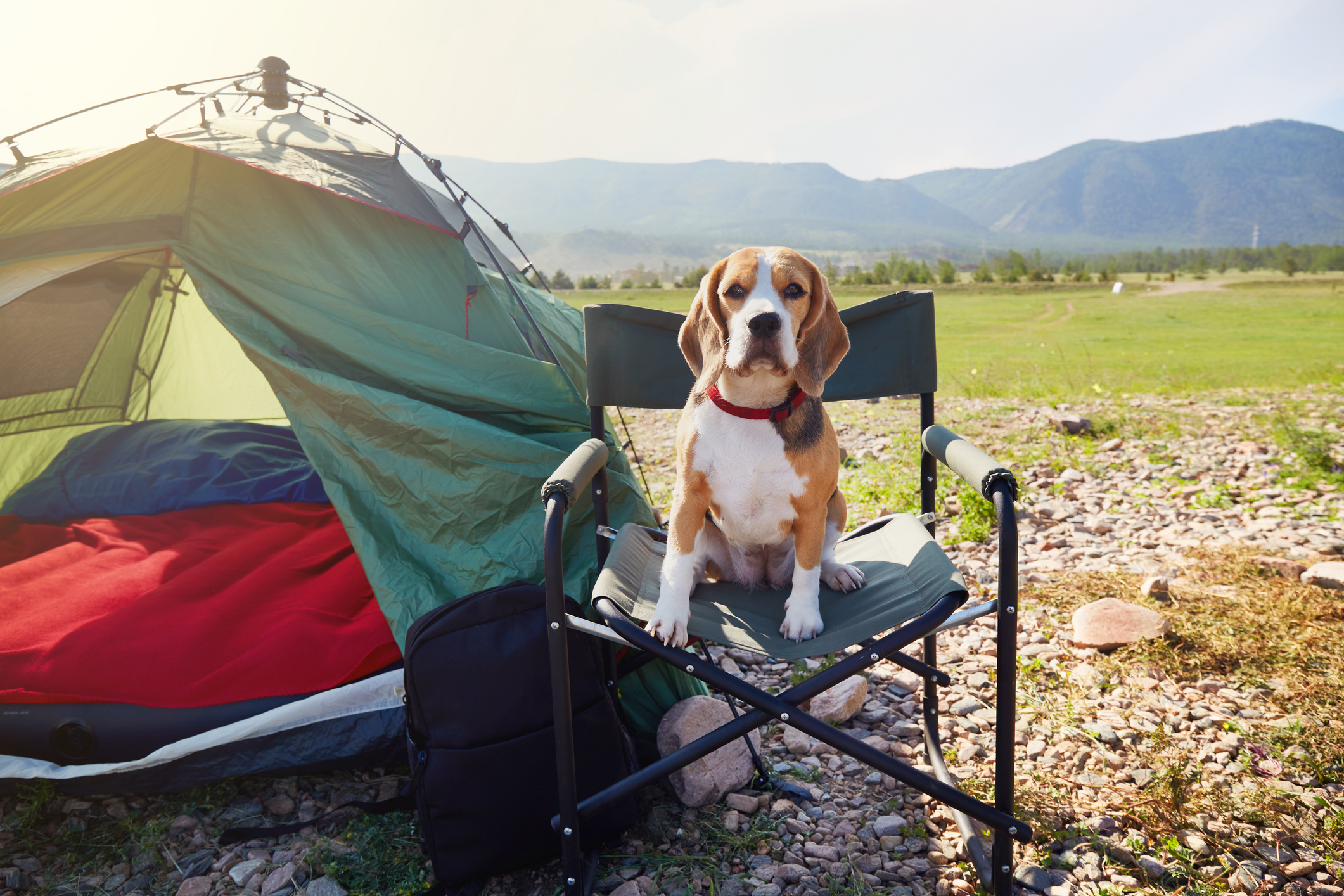Camping isn’t known for being a clean activity, and that means you’ll come home with dirty gear and hiking boots. Here’s how to clean your tent, sleeping bags, and other dirty camping gear so it’s fresh and ready for your next trip.
List of Gear You Should Clean After a Camping Trip
When you get home, you’ll probably need to clean (and dry!) your:
- Tent
- Sleeping bag
- Cookware (and anything else that held food or water)
- Clothes and towels
- Hiking boots
- Hiking pack
Cleaning these items after each trip helps prolong their lifespan and avoids dirt and grime buildup.
How to Clean a Tent by Hand
Most often, you can probably get away with drying a wet, dirty tent by setting it up in your yard and letting it air-dry. Once dry, sweep or vacuum away the dirt, sand, and insects.
If the tent caught some serious abuse on the trip, handwashing it might be necessary. You’ll need a large tub or laundry sink, non-abrasive sponges or cloths, mild dish soap, and a cleaner specifically designed for outdoor gear.
Here’s how to properly clean a tent by hand:
- Open the doors and vents of your tent and shake out as much debris as you can outside. Turn the tent inside out and repeat.
- Use a sponge or cloth and your dish soap to spot-clean any stains and reduce the dirt layer on extra-dirty places, inside and out.
- Fill your tub with cool to lukewarm water and the gear cleaner, following the directions on the bottle for the amount.
- Keep the doors open and the tent inside out. Put it in the prepared tub, completely submerging the tent. Soak as long as the cleaner you use recommends.
- Drain the tub and refill it with clean water, rinsing the tent. Repeat as necessary until the tent is free of soap.
- Set up the tent outdoors (or indoors if it’s raining and you have a tarp to protect your floor) and let it dry completely before storing. It’s best to dry your tent in a shaded area to minimize sun damage to the fabric.
Washing your tent makes it last longer by removing abrasive sand, dirt, stones, and sticks. It also removes any bacteria the tent may have picked up on your trip. Make sure you also shake out, wash off, and dry any tarps you use.
Can You Wash a Tent in a Washing Machine?
No, you should never put a tent in the washing machine or dryer. Tents aren’t made to be machine washable or dryer safe. Washing machines can rip, tear, stretch, or otherwise damage your tent.
How to Wash a Sleeping Bag
For your post-trip clean:
- Make a paste with gentle dish soap and water.
- Scrub any visible stains with a toothbrush while holding the shell away from the inner fill. (The more you get the fill wet, the less loft it will have and the less warm your sleeping bag will be.)
- Wash the hood and collar at the top of the sleeping bag to clean off skin and hair oils.
- Allow the bag to air-dry.
Every once in a while, the bag should be fully washed, even with the decrease to the filling loft. When the bag gets visibly grimy enough to need a full wash, check the manufacturer’s tag for washing instructions. Unlike tents, most sleeping bags can be put in the washing machine. We recommend using a front-loading washer with no center agitator.
- Run your completely unzipped sleeping bag through a gentle cycle, with an outdoor gear cleaner (not laundry detergent). This specialized cleaner helps preserve and restore waterproofing and water-repellant coatings.
- Run an extra rinse cycle to remove the cleaner completely.
- Wring out excess water and lay flat to air dry, or run the bag through a dryer cycle on the lowest heat setting.
How to Clean Hiking Boots
Hiking boots are some of your most important gear. Here’s how to take proper care of them after an intense backpacking trip:
- Remove the laces before cleaning.
- Take your boots outside and gently knock them together to dislodge clumps of dirt from the exterior.
- Gently brush dry dirt or dust off with a clean cloth. Rinse more stubborn mud off with a hose or faucet.
- Find a boot cleaner that’s compatible with the material of your boots. Use a toothbrush or boot brush to work the cleaner into the uppers of your boots.
- Use boot cleaner and a brush to work the worst of the dirt off the outsoles.
- Check the waterproofing of waterproofed boots. If water doesn’t bead up on the exterior of the boots, reapply your waterproofing while they’re still damp.
- Remove the insoles and let them dry separately. Allow your boots to air-dry. Never use anything heated to speed up drying. Instead, try a fan or stuffing your boots with newspaper, changing the paper when it’s damp.
- Use leather conditioner to prevent cracking in full-grain leather boots.
How to Clean a Hiking Backpack
Your hiking pack comes with you on every trip! It also gets set down directly on the ground, frequently picking up traces of things you want to clean off as soon as possible.
For a clean backpack:
- Empty every pocket. Yes, every pocket. You’d be surprised where you might have stuck a damp towel or half a granola bar on the trail.
- Open every pocket and shake the pack upside down to get rid of sand, dirt, leaves, and other debris.
- Wipe out the interior with a damp sponge or cloth.
- Spot-clean mud and dirt with lukewarm water, mild soap, and a cloth or soft brush. Make sure to get the underside of the pack, which touches the ground the most often.
- Rinse off the soap with your sponge or cloth and cool, clean water.
- If water is soaking into the fabric instead of beading on the surface, reapply your waterproofing spray when the bag is damp or fully dry.
Camping Is Fun: Cleaning? Not So Much!
When you’re on the camping trip of a lifetime, it’s nice to come home to a clean house. With regular professional cleaning from The Cleaning Authority, now you can!
Camping and cleaning are both a lot of work, but camping is a lot more fun. Set up professional cleaning to make more time for outdoor trips when you call (888) 658-0659 or request an estimate online.

